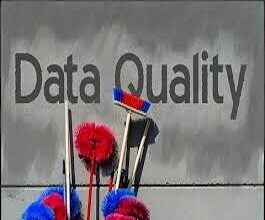 “So much data, so little time.” That’s how a lot of companies feel about the explosion of Big Data. After all, the thought of capturing, analyzing and somehow getting insights from mountains of disparate data can be overwhelming.
“So much data, so little time.” That’s how a lot of companies feel about the explosion of Big Data. After all, the thought of capturing, analyzing and somehow getting insights from mountains of disparate data can be overwhelming.
 “So much data, so little time.” That’s how a lot of companies feel about the explosion of Big Data. After all, the thought of capturing, analyzing and somehow getting insights from mountains of disparate data can be overwhelming. And not having visual forms of data for decision-making has been a key factor preventing companies from capitalizing on Big Data.
“So much data, so little time.” That’s how a lot of companies feel about the explosion of Big Data. After all, the thought of capturing, analyzing and somehow getting insights from mountains of disparate data can be overwhelming. And not having visual forms of data for decision-making has been a key factor preventing companies from capitalizing on Big Data.
Fortunately, with the help of powerful and easy to use visualization tools from companies such as Tableau Software, that’s rapidly changing. Here’s a look at how data visualization is empowering more and more companies to draw actionable insights from Big Data.
The power to show data visually
Tables of numbers can be difficult to understand. And attempting to gain insights from data on spreadsheets can be long and laborious. When viewed in a visual format such as diagrams, charts, maps and graphs, data becomes easier to understand—without anyone having to be a data scientist. In fact, understanding visualized data can happen almost instantaneously, regardless of the viewer’s knowledge of complex mathematical or statistical algorithms.
The power to reveal details
Data visualization harnesses the ability of the human visual system to process an entire visual field all at once. This is particularly helpful when dealing with noisy, highly unstructured data. When complex data is properly visualized, it’s easier for the viewer to pick out various details that could lead to important insights—details that might otherwise remain buried in the math. The key is finding a view of the data that can reduce complexity without compromising important information.
The power to get to answers fast
Due to its intuitive nature, data visualization allows those who are working with information questions to essentially do so at the speed of thought, as opposed to having to write queries on a database. By eliminating the query process, data visualization reduces the time it takes to get to the real answers.
The power of simplicity
Data visualization is all about data simplification. Along with providing the ability to create the visual that best serves the data, visualization software has built-in features designed to simplify the data analysis process. One such feature—proprietary to Tableau Software—is a drag and drop interface that lets data viewers look at various graphical views quickly and easily as they analyze the data.
The power to improve team problem solving
One of the challenges for teams attempting to analyze problems is to quickly get all team members on the same page. Data visualization helps unify teams by creating a “shared view” of the information. In addition, data visualization allows team members to click on specific data points to better determine what is going on, thus heightening the ability of the team to solve real problems and gain insights together in real time.
The power to make better decisions
Data visualization helps people make smarter more effective decisions by enabling them to see the types of patterns, trends and relationships within the data that lead to insights. Armed with these insights, decision makers can take clear and concrete actions to drive desired outcomes.
Don’t let the vast amounts of data intimidate you. Leverage the power of Big Data platforms, like Hadoop, and other data visualization technologies to more easily extract insights and present your results to others.
Image source: Hiro Sheridan on Flickr









